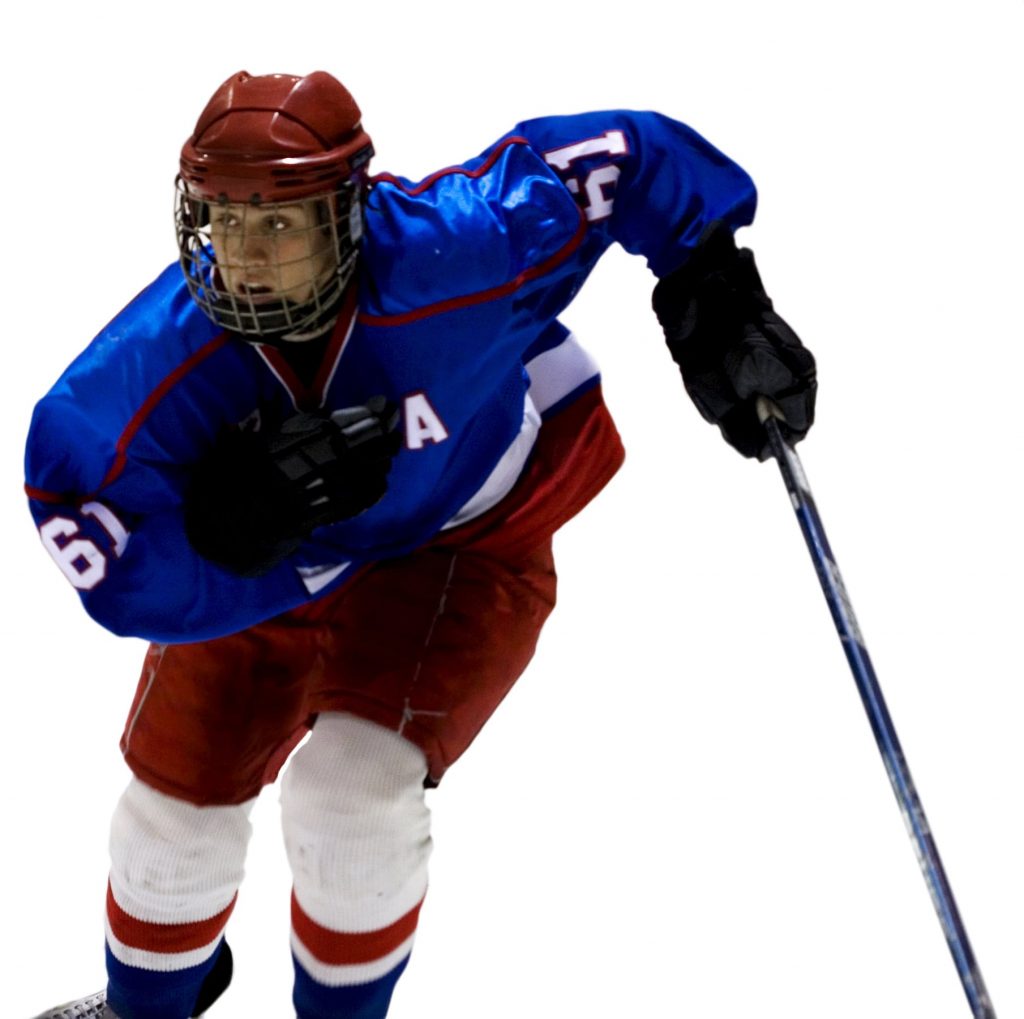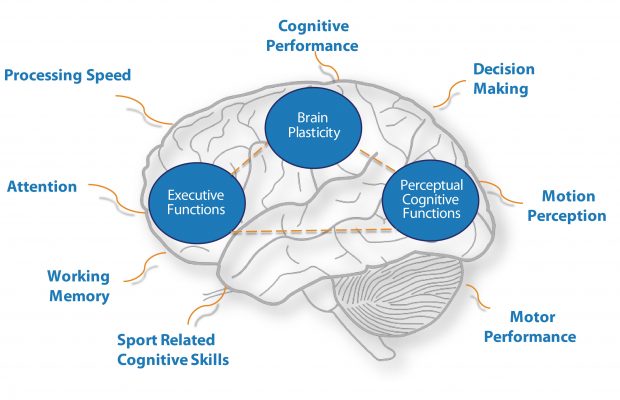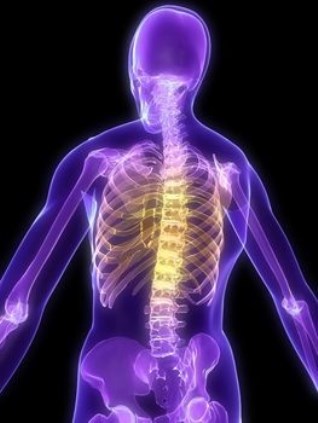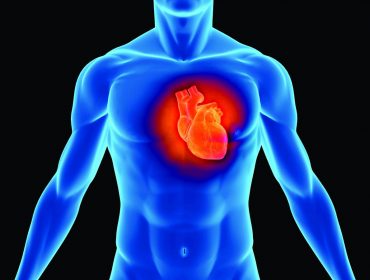Concussion
MANAGEMENT
Clinical Management
In our evaluation we will determine what functional issues and resultant symptoms are a problem. Treatment will then follow controlled intentional stimulation of symptoms through a variety of drills and exercises. Management will involve both in clinic and at home exercises/drills. In clinic management may involve some or all of the following:
- Altitude Simulation
- NeuroTracker Training
- Vision Rehab
- Vestibular Rehab
- Manual Therapy and Whiplash Rehab
Please CLICK above for more information

ALTITUDE SIMULATION
Altitude Simulation may be a great treatment option in yours or your child’s concussion recovery. Research is demonstrating that a drop and/or interruption in growth hormone production may be an issue in the concussed brain. Altitude simulation is known to stimulate growth hormone production. While no specific research has been done using altitude simulation in the management of concussion, this relationship to growth hormone may be why we have seen a consistent and usually an immediate improvement in symptoms using altitude simulation with concussed patients.
Regardless, what is known and widely accepted with respect to recovery is the importance of controlled cardiovascular conditioning. Altitude simulation is a simple way to stimulate and improve cardiovascular fitness without placing a physical demand on the patient or aggravating symptoms. It is common for an athlete to actually be in better cardiovascular condition post injury due to the use of altitude simulation in rehab. There are also many benefits for those looking to better their health and athletic performance…

Health and Longevity
Benefits:
- Weight Loss
- Improvement in Blood Pressure
- Improved Cholesterol
- Improvement in Asthmatic Conditions
- Improved Libido & Sex Drive
- Improvement in blood sugar
- Improved cardiovascular fitness
- Increased Energy & Feel Younger
For decades now, athletes have been aware of the benefits that altitude training can have for their performance in terms of overall strength, power and endurance. Researchers through the process of studying these benefits have also discovered many benefits for the average person (non-athlete); in fact the benefits of altitude training in application to wellness may actually outweigh all the benefitsgained within athletics.
The human body is genetically geared to adapt its systems to challenges and changes in the environment. Exposure to reduced oxygen levels (high altitude or hypoxia) creates such a challenge to the human body because oxygen is the primary source of energy for all of our cells. Under a state of hypoxia the body strives to produce required amounts of energy with less oxygen available. In doing so variety of physiological reactions and changes to multiple organ systems occurs all geared toward improving the body’s ability to utilize oxygen.
The following physiological reactions have been shown to occur:
- Amplified lung oxygen absorption – a benefit in athletic performance has also shown to improve lung function in asthmatics.
- Boosted production of Erythropoietin Hormone (EPO) by the kidneys, stimulating the generation of Red Blood Cells (RBCs) and enhanced oxygen transportation through the body – having an impact of increase energy levels and physical stamina
- An increase in the number of end point blood vessels in tissues for greater oxygen delivery to the tissues, muscles and the brain
- Enhanced production and rejuvenation of mitochondria (the human cell’s hub for aerobic energy production) and mitochondrial enzymes, allowing more e cient use of oxygen for energy production and superior enzymatic anti-oxidative defences; resulting in increased energy but also boosted immune capacity and protective properties against cancer and heart disease.
- Improved insulin sensitivity and blood sugar management – aiding in management of diabetes and general weight management.
Some additional benefits include:
- Decreased average Heart Rate and Blood Pressure
- Increased production and release of Human Growth Hormone; resulting in improved immune capacity, better sleep and injury repair.
- Stimulation of fat metabolism – WEIGHT LOSS
- Decreased oxidative stress from Free Radicals (Reactive Oxygen Species “ROS”) – beneficial in pre-radiation treatment and over all immune capacity.
Enhance Your Training with
ALTITUDE SIMULATION TRAINING
Used by Top Olympians,
Own the Podium Program,
Champion MMA Fighters,
David Beckham,
and a growing number of other top athletes
Athletic Performance
- Increased V02 max (max rate of oxygen usage)
- Enhanced power output and speed
- Improved strength and endurance
- Increased exercise-till-exhaustion (ETE) time
- Reduced recovery time post workout
- Faster recovery between games and shifts
- Decreased resting heart-rate and blood pressure
- Maintenance of cardiovascular ftness when injured
- Diminished overall fatigue
Today it is the most popular and only legal method to getting a physiological edge over the competition. Through a combination of sleeping in normobaric hypoxia every night and moderately working out in this environment 2-3 times per week, athletes can boost performance to otherwise unachievable levels.
NeuroTracker
NeuroTracker is a breakthrough neuroscience technology for improving attention and awareness – the system uses ‘3D multiple object tracking’ across a wide field of view to isolate and train several cognitive skills. The user sits or stands in front of a large 3D display and follows several moving targets while ignoring distractors.
Baselines can reliably quantify an athlete’s normative perceptual-cognitive ability. So a return to these levels can offer us clinically a measureable indicator of return to performance level status in the post-concussion return to play stages, supporting other contemporary assessments.
The NeuroTracker uses varied computer generated programs in a virtual 3d environment on a 60 inch 3d television. A session/baseline consists of 3 sets of 20 trials with each trial lasting 8 seconds
NeuroTracker isolates, trains and tests the high-level mental resources that are necessary for the perception of complex movement in a dynamic sports environment. These perceptual-cognitive resources are known be sensitive to concussion-related damage, particularly during late recovery stages when impairments are measureable but the patient is otherwise symptom free and feeling normal. For this reason combined with the reality that NeuroTracker is a direct objective measurement of brain function and processing speed, NeuroTracker is an ideal baseline measurement in any concussion program. A baseline session lasts approximately 30-40 minutes
Training stimulates neurological adaptations for rapid improvements in many areas of cognitive performance including:
- Attention (mental focus, concentration & awareness)
- Executive function (including working memory)
- Biological motion perception (reading body movements).
Accurate data allows reliable measurements of perceptual cognitive improvement following injury or illness.

What else does NeuroTracker help with?
• All daily cognitive activities which involve concentration and awareness
• Movement coordination – increased accuracy and response times
• Reading of body language and movement – safer walking in crowds and better social awareness
• Driving skills – better peripheral vision, reactions and awareness for safer driving
• Confidence – increased sense of assurance for cognitive and physical competence.
Research has Shown that Completing.
12-30 NeuroTracker sessions each 5-6 minutes in length = 1.5-3 hours total training time produces improvements in human cognitive function among healthy subjects (18-75 years old) 1-4 and athletes 5-8
Binocular Vision Rehab
Following concussion individuals often experience problems coordinating their eye movements when tracking objects or reading text; Binocular Vision. Our evaluation evaluates and screens for binocular vision function and we work extensively with one of the world’s top vision specialists in binocular vision. Often with minor dysfunction we are able to deal with issues in clinic and for those who require more extensive work, a referral to the specialist we deal with will be set in motion for more in depth evaluation and treatment.
Vestibular Rehab
The vestibular system allows our brains to orient where our body and its parts are in relation to space and time. Problems within the vestibular system following a concussion typically cause symptoms of dizziness and nausea and sometimes headaches. Special exercises/drills will be given following the principles mentioned previously of stimulation followed by rest and recovery.
Manual Therapy and Whiplash Rehab
Sometimes whiplash can mimic a concussion and when there are established cognitive baselines prior to injury we can more readily differentiate what is a concussion and what is a whiplash injury. Regardless, whiplash and neck issues are almost always a component within concussion. In fact some research suggests whiplash mechanisms are the primary cause of concussion as opposed to a head contact injury.

We manage concussion through chiropractic, using both manual manipulation and other manual techniques which involve no manipulation. While manipulation of the neck still remains safer than taking an Advil or Tylenol we understand some individuals don’t like this form of treatment for a variety of reasons. In such cases we use a technology called ProAdjuster. ProAdjuster utilizes a computerized technology and a piezoelectric sensor to evaluate the spine. We then treat problem areas using a gentle low force percussion to adjust the segment by gentle vibration. Thus there is no “popping” or twisting of the spine. Some clients prefer manual techniques and some clients prefer the ProAdjuster. Some clients actually have no preference and such cases we use a combination of manual and ProAdjuster. Either way we orient treatment around the comfort of the client.
Recovery Expectations
The bottom line is that there is no way to definitively tell anyone how long the recovery process will be with a concussion. Most will recover within 1-2 weeks but some can take months. There is a wide variation with individuals and the length of time doesn’t usually coincide with the severity of the injury or initial symptoms.
There are two primary reasons why active clinical care should be implemented with the recovery process, as opposed to the rest, wait and see approach.

1. We can expedite the recovery process.
2. We can ensure a safe and objective return to play. Making sure that an athlete doesn’t return to play prematurely. This is critical because the athlete WILL in most cases feel normal before their brain has actually fully recovered. If an athlete returns to play before the brain fully recovers then they can create significant impairment ranging from a more severe concussion requiring many months of symptoms to permanent disability and even death.
We will not release your child to return to play until they have completed all internationally standardized return to play protocols and we are satisfied that they have established cognitive baselines through multiple testing protocols. Once they have been released then you can feel confident that they can return to their sport with no greater risks than they were exposed to prior to injury. The many horror stories reported with concussion have primarily involved those who have returned to action prior to full recovery.
The best and most ideal management utilizes baseline cognitive testing of the athlete established prior to injury. We are happy to provide you with more information on baseline cognitive testing. Once your child has been released from active concussion care we will have established a new cognitive baseline for future reference should they become concussed again.

